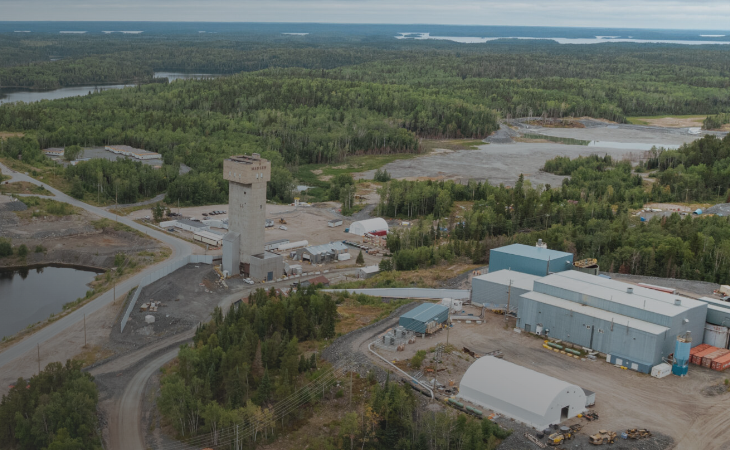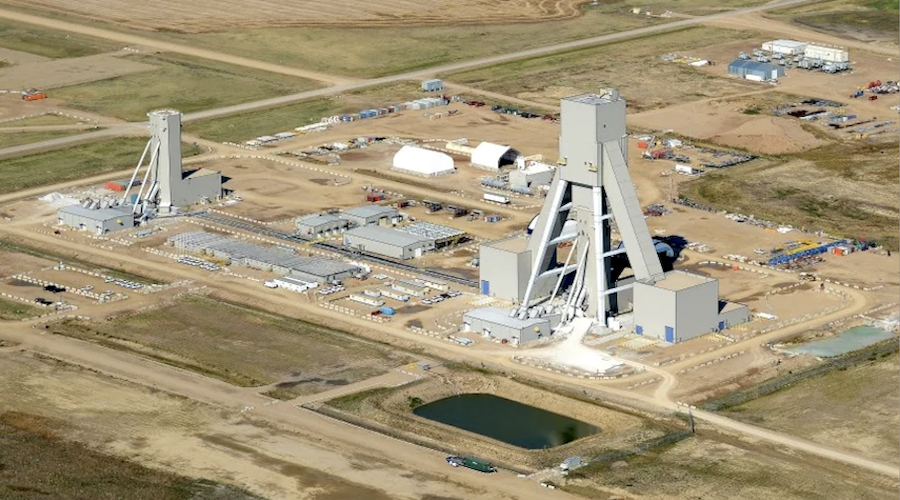VANCOUVER — Barkerville Gold Mines' share price has climbed more than 50% since the company put out a 10.6-million-oz gold resource estimate for its Cow Mountain deposit, but questions remain as to the accuracy of the estimate.
The resource estimate in question, compiled by Geoex Ltd. president Peter T. George, establishes 62.6 million indicated tonnes grading 5.28 g/t Au using a 0.86 g/t cut-off for the project in central British Columbia.
On the day Barkerville released the news its share price almost doubled at one point, climbing 79¢ to a high of $1.60 before closing up 40¢ or 49% at $1.21 with 7.2 million shares traded. On July 3, the second day of trading following the news, the company’s share price again spiked, reaching as high as $1.67 before enthusiasm waned and the company closed up a penny at $1.22 with 11.3 million shares traded.
The new resource follows up on a 2006 estimate on the project by G. H. Giroux of Giroux Consultants that estimated Cow Mountain contained 6 million indicated tonnes grading 2.23 g/t Au for 431,000 oz of gold, plus an inferred resource of 1.5 million tonnes grading 1.85 g/t Au for a further 91,000 oz of gold, all using a 0.68 g/t cut-off.
The huge jump in both the tonnage and grade has raised the suspicion of observers.
“It can’t go from half a million ounces at half the grade to 10 million ounces at twice the grade, you can’t do that, it doesn’t happen in reality,” said geologist Brent Cook of Exploration Insights in a phone interview. Cook said his initial reaction to the news was disbelief.
“It got me to pull out my copy of ‘Gold Today, Gone Tomorrow’,” Cook said of the book about the Bre-X scandal.
Quinton Hennigh, writing for Brent Cook’s Exploration Insights newsletter, raised numerous questions about the estimate. To giving a visualization of what the deposit would look like, he wrote:
“It is an order of magnitude richer per cubic meter than the Timmins Camp in Ontario. To support such a resource, the 1,000 by 300 by 300 meter block of ground at Barkerville’s Cow Mountain would have to host approximately 39 kilometers of Mother Lode type veins, at a density of one 2-meter wide vein spaced every 7.6 meters. This assumes each and every vein is consistently grading 5.28 grams per tonne gold along a 300 meter strike and 300 meter depth.”
Along with pointing out the dubious “quantum leap in size and grade” of the resource compared with the previous one, Hennigh also points out the oddity of the whole resource qualifying as indicated category with no inferred, that a single drill hole in a 30-metre horizontal by 15-metre vertical ellipse qualifies the block as ore, that the company has employed ‘extreme grade smearing’, and that the company has released far too little data overall.
For instance, the 2006 resource was based on 366 diamond and percussion drill holes completed between 1980 and 1998, and the company looks to have drilled about 238 drill holes between 2007 and 2011. Barkerville, however, states that a total of 2,638 drill holes have now been drilled on Cow Mountain totalling 145,600 metres of drilling, without providing the source of all those drill holes nor the assay results.
Looking beyond the Cow Mountain resource, the Geoex study also took the unusual step of putting out the ‘geological potential’ of the 6.4-km-long trend on which Cow Mountain falls. Based on 10% of the company's tenure, including the Cow Mountain, Island Mountain, and Barkerville Mountain areas, the Geoex report states there could be between 367 million tonnes and 621 million tonnes grading between 4.11 g/t and 5.49 g/t Au. That would mean the company could theoretically be sitting on between 65 million and 90 million oz of gold.
“It’s impossible, period,” was Cook’s reaction to the 90 million oz figure. Even for the Cow Mountain resource itself, Cook pointed out the challenge of achieving such high numbers.
“This is a narrow, high grade vein district. From the cross-sections we’ve seen, you have a real hard time connecting the veins. Continuity is a real real problem there,” Cook said.
Geologically the project is underlain by the Barkerville terrane, which is part of the Omineca belt of the Canadian Cordillera. Barkerville reports that gold mineralization occurs as quartz veins located in shear-type and tension-type fractures in lithologies more brittle than the surrounding lithologies, and as disseminated sulphide zones localized in the nose of secondary local fold structures that have the same northwesterly plunge as the regional, orogeny related, asymmetrical, overturned, isoclinal fold structures.
Peter George has already been rebuked once for an overly optimistic resource estimate, with the British Columbia Securities Commission forcing Rubicon Minerals in March 2011 to re-state an estimate prepared by George.
To read more Northern Miner articles, click here





Comments